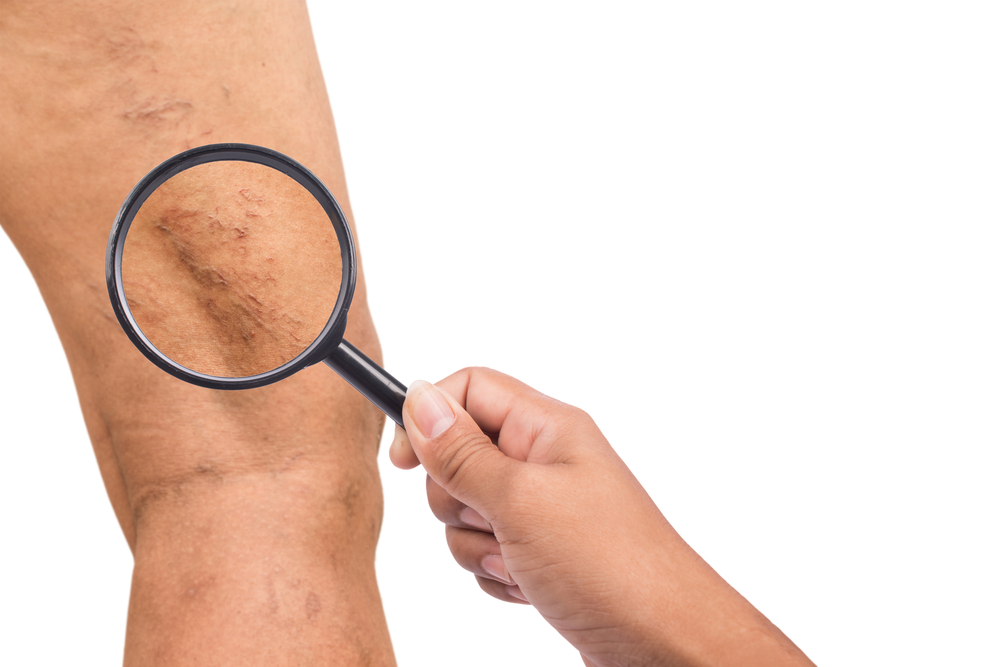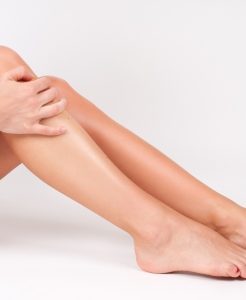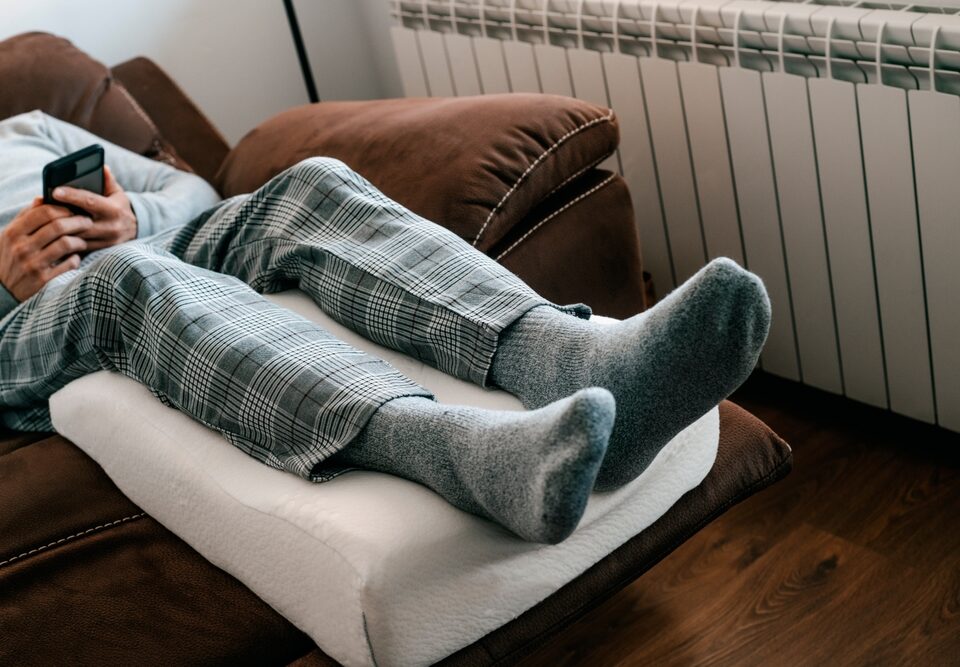
Scared of Spider Veins? Expert Advice to Prevent and Treat Them
December 30, 2017
Why You Shouldn’t Leave Varicose Veins Untreated
January 26, 2018Many patients with varicose and spider veins seek treatment for aesthetic improvement.
It is also important to identify underlying abnormalities or more serious venous conditions.
Patients should be aware of these five vein conditions:
1. Varicose and Spider Veins
Varicose Veins are enlarged or bulging veins that occur in the legs and are blue or purple in color. Spider Veins are smaller dilated veins that have a web like appearance.
Causes
Varicose and spider veins may be caused by damaged valves, genetics, and prolonged periods of standing.
Symptoms and Signs
Patients may present with leg pain, heaviness, swelling, or itching that improves with leg elevation.
Diagnostic tools
A Venus Duplex Ultrasound can visualize deep and superficial veins to help identify abnormalities and treatment areas.
Treatments
- Compression stockings are the first line of treatment. They improve circulation to push blood back to the heart and away from lower extremities.
- Ablation or Occlusion of the Saphenous Vein is an in-office procedure performed under local anesthesia.
An ultrasound will be used to identify the veins to be treated and a catheter will be inserted. The catheter then uses radio waves, chemicals, or laser energy to close the veins.
The patient may experience bruising for a week and is advised to wear compression stockings for 10 days post treatment.
- Sclerotherapy is performed in-office and sometimes includes the use of ultrasound imaging. A very fine needle is used to inject a solution which will cause the vein to collapse within 6-8 weeks.
This treatment is recommended for veins that are greater than 1 mm and when the saphenous vein is normal.
- Laser ablation is light-based energy that damages a spider vein and causes it to close. This treatment is a good option for very small veins and will require more treatments than sclerotherapy.
2. Deep Venous Thrombosis (DVT)
Deep Venous Thrombosis is the formation of a blood clot in a deep vein of the body. This condition can be deadly if not treated immediately.
Causes
Risk factors include sitting or lying down for long periods of time, trauma (including surgery), cancer, congestive heart failure, or pre-existing clotting conditions.
Symptoms and signs
A patient experiencing a DVT may have pain, swelling, and/or discoloration of a leg or arm.
Immediate medical attention is necessary to minimize the risk of a pulmonary embolism, which can be fatal.
Diagnosis
DVT can be diagnosed by ultrasound, CT or MRI.
Treatments
DVT treatments include anticoagulation medication and thrombolytic therapy which is a “clot busting treatment.”
3. Chronic Venous insufficiency (CVI)
Chronic Venous insufficiency is when veins are so damaged that they are unable to properly return blood to the heart.
Causes
Clots or diseased valves are usually identified as the main causes of CVI.
Symptoms and signs
Patients with CVI may experience pain and swelling of the legs that decreases when legs are elevated. They may also note the appearance of small veins, ulcerations, and dark, thick skin around the ankles.
Diagnosis
CVI is usually diagnosed by ultrasound.
Treatments
Treatment options include compression stockings, stenting, vein bypass, surgical removal of damaged valves, medications, and regular exercise. Patients with CVI should also avoid prolonged periods of standing.
4. Pelvic Venous Congestion Syndrome (PCS)
Pelvic Venous Congestion Syndrome is when veins do not properly drain the pelvis causing blood to back up in this area. Patients may experience pelvic pain, excessive menstrual bleeding, bladder urgency, and varicose veins in the genital area.
PCS may be treated with medication, vein embolization, or sclerotherapy.
5. Venous Compressive Syndromes
Venous Compressive Syndromes occur when a structure blocks a major vein (i.e. renal vein), resulting in compression or clotting of that vein. Stenting or vein bypass are two surgical options for treatment of these conditions.
If you want to know more about vein treatments, call the Vein Center of Maryland to schedule an appointment. We are conveniently located in Westminster, Eldersburg, Baltimore, Hunt Valley and Bel Air.




